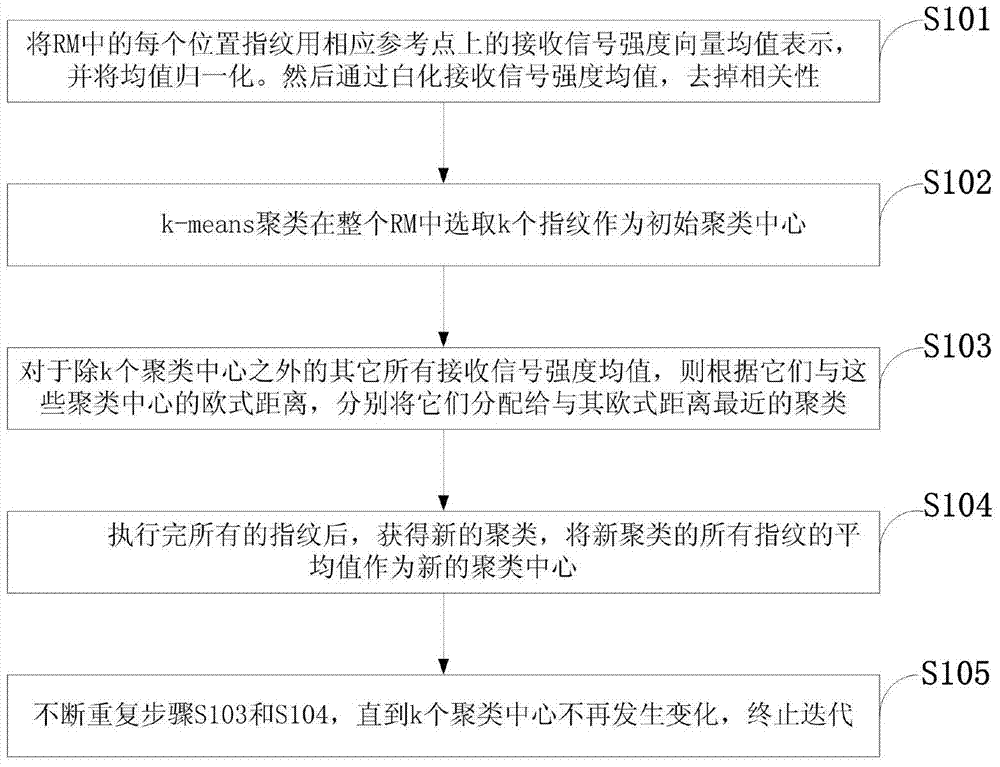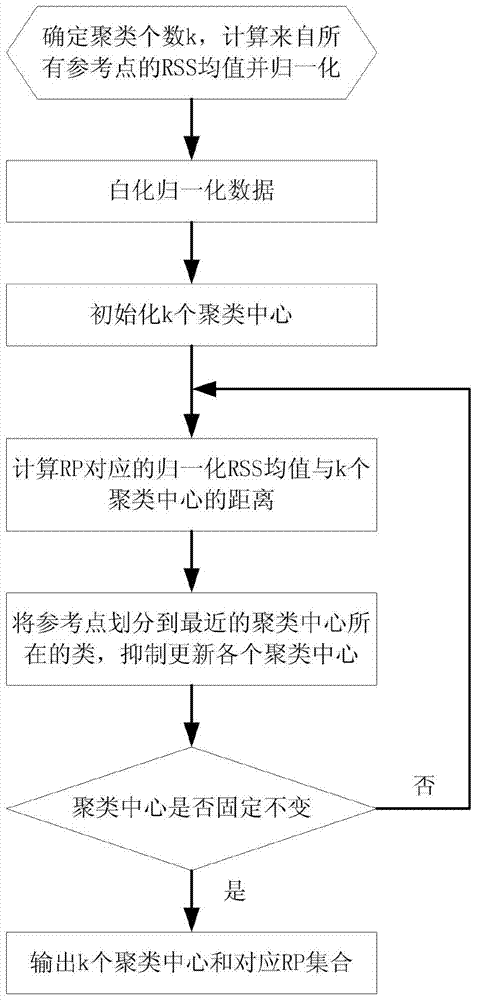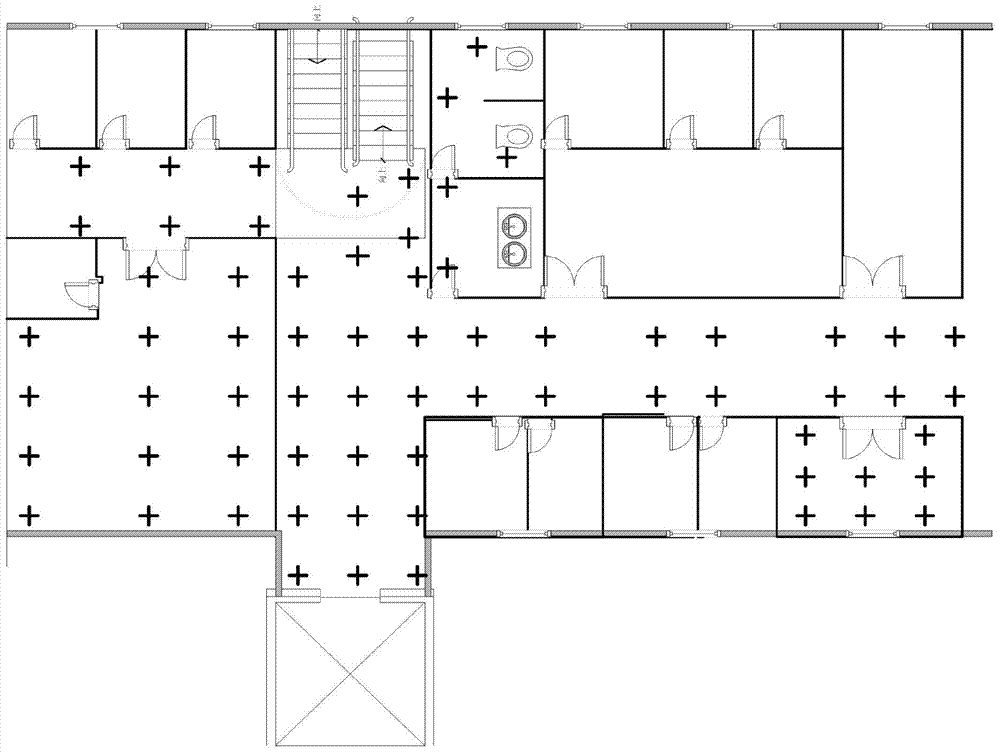A k-means clustering method for access points based on received signal strength signal zca whitening
A technology of received signal strength and clustering method, which is applied in the directions of nan, wireless communication, wireless communication service, etc., can solve the problems of insufficient clustering accuracy and limited positioning accuracy, and achieves convenient operation, improved accuracy, and simple method. Effect
- Summary
- Abstract
- Description
- Claims
- Application Information
AI Technical Summary
Problems solved by technology
Method used
Image
Examples
Embodiment 1
[0048] Such as figure 2 As shown, the embodiment of the present invention specifically includes the following steps:
[0049] The first step is to determine the number of clusters k, calculate the RSS mean value from all reference points and normalize;
[0050] The second step is to whiten the normalized data;
[0051] The third step is to initialize k cluster centers;
[0052] The fourth step is to calculate the distance between the normalized RSS mean value corresponding to RP and the k cluster centers;
[0053] The fifth step is to divide the reference point into the class of the nearest cluster center, and suppress the update of each cluster center;
[0054] The sixth step is whether the cluster center is fixed or not, otherwise, return to the fourth step, if yes, execute the next step;
[0055] The seventh step is to output k cluster centers and corresponding RP sets.
[0056] The present invention whitens received signal strength (RSS) signals first, and then combi...
PUM
 Login to View More
Login to View More Abstract
Description
Claims
Application Information
 Login to View More
Login to View More - R&D
- Intellectual Property
- Life Sciences
- Materials
- Tech Scout
- Unparalleled Data Quality
- Higher Quality Content
- 60% Fewer Hallucinations
Browse by: Latest US Patents, China's latest patents, Technical Efficacy Thesaurus, Application Domain, Technology Topic, Popular Technical Reports.
© 2025 PatSnap. All rights reserved.Legal|Privacy policy|Modern Slavery Act Transparency Statement|Sitemap|About US| Contact US: help@patsnap.com



